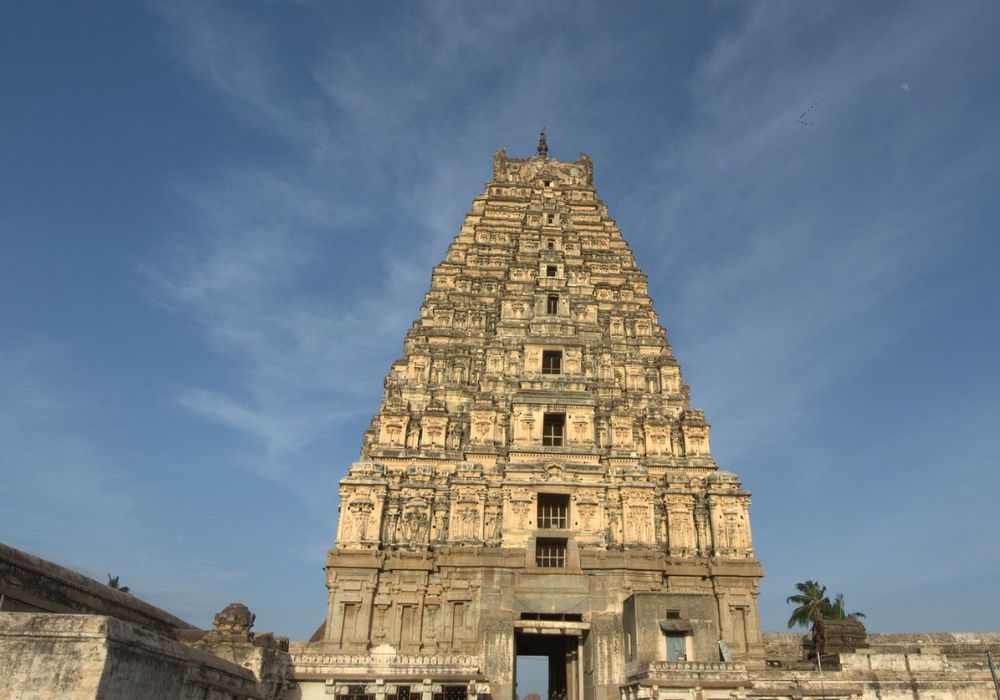The Virupaksha Temple, situated in the historic town of Hampi, Karnataka, is a revered Hindu temple with a rich history and architectural grandeur that epitomizes the cultural essence of ancient India.
Believed to have been built in the 7th century by King Vikramaditya II of the Chalukya dynasty, the temple is dedicated to Lord Virupaksha, an incarnation of Lord Shiva.
One of the most significant features of the temple is its architectural beauty, characterized by intricate carvings, majestic gopurams (entrance towers), and a sprawling temple complex.
The temple’s main tower, or gopuram, stands tall, welcoming devotees and visitors into its sacred premises.
The intricate carvings adorning the walls and pillars narrate tales from Hindu mythology and showcase the skill and craftsmanship of the artisans of yore.
Beyond its architectural splendor, the Virupaksha Temple holds immense cultural importance.
It serves as a focal point for religious and social gatherings, hosting numerous festivals and ceremonies throughout the year.
The temple’s vibrant atmosphere, filled with the sound of prayers and the fragrance of incense, creates a sense of peace and spirituality that attracts pilgrims and tourists alike.
| Special Tips*: Visit Virupaksha Temple early to avoid crowds and wear comfortable shoes for extensive walking. Carry water to stay hydrated and be mindful of dress codes and temple etiquette. |
Virupaksha Temple: Key Details and visit Information
| Feature | Description |
| Location | Hampi, Karnataka, India |
| Religious Significance | Dedicated to Lord Shiva, Virupaksha Temple is one of the oldest functioning temples in India and a part of the UNESCO World Heritage Site of Hampi |
| Architectural Style | Dravidian architecture with intricate carvings, towering gopurams (entrance towers), and pillared halls |
| Key Features | The towering 50-meter-high main gopuram, the central sanctum housing the Shiva Lingam, and the beautiful mural paintings on the ceilings |
| Historical Significance | Originally built in the 7th century, the temple was expanded and flourished during the Vijayanagara Empire (14th-16th centuries) |
| Pilgrimage Experience | A major pilgrimage site for devotees of Lord Shiva; the temple is bustling with religious activities and festivals throughout the year |
| Festivals Celebrated | The annual chariot festival (Rathotsava) and the marriage festival of Virupaksha and Pampa (Pampa Devi) are celebrated with great enthusiasm |
| Nearby Attractions | Hampi’s other UNESCO-listed monuments like the Vittala Temple, Lotus Mahal, Hampi Bazaar, and the Tungabhadra River |
| Accessibility | Nearest railway station is Hospet Junction, around 13 km from Hampi; well-connected by road to major cities in Karnataka |
| Best Time to Visit | October to February for pleasant weather and to explore the extensive ruins and cultural heritage of Hampi |
History of the Virupaksha Temple
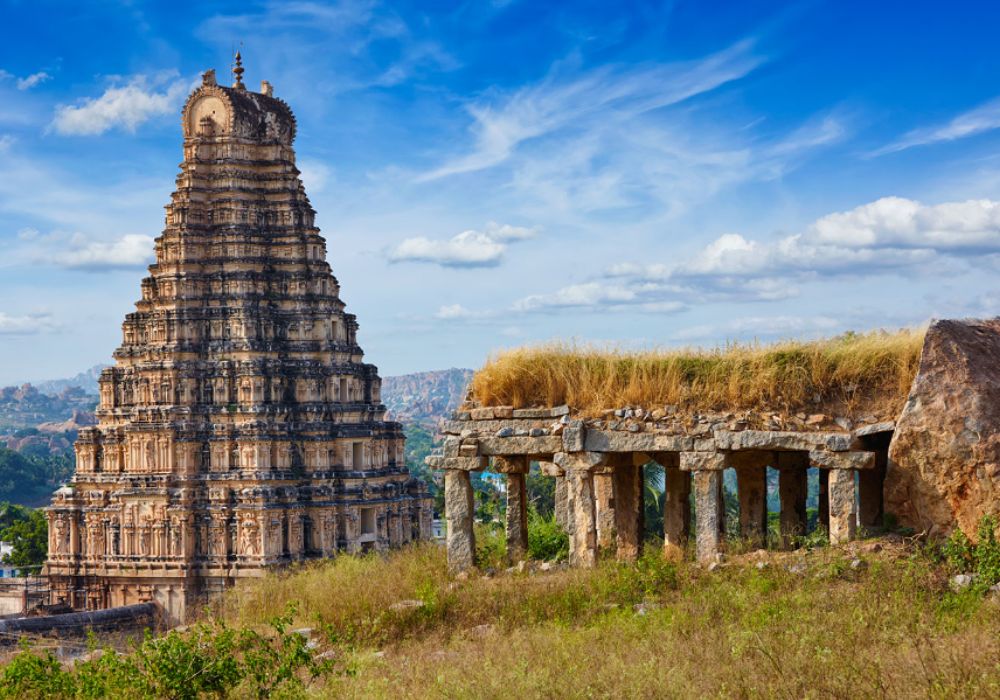

The history of the Virupaksha Temple dates back to the 7th century when it was originally constructed.
Over the centuries, the temple has undergone several expansions and renovations, each contributing to its current grandeur.
The temple’s history is intertwined with the history of the Vijayanagara Empire, which ruled over the region from the 14th to the 16th century.
During this period, the temple received significant patronage and support from the Vijayanagara kings, who contributed to its expansion and embellishment.
One of the most notable contributions to the temple’s architecture was made during the reign of King Krishnadevaraya, a prominent ruler of the Vijayanagara Empire.
Under his patronage, the temple underwent a major renovation, resulting in the construction of the impressive gopuram (entrance tower) that stands tall to this day.
Apart from the Vijayanagara rulers, the temple also received patronage from other dynasties, including the Chalukyas and the Hoysalas, who played a role in its construction and expansion.
Architecture and Design
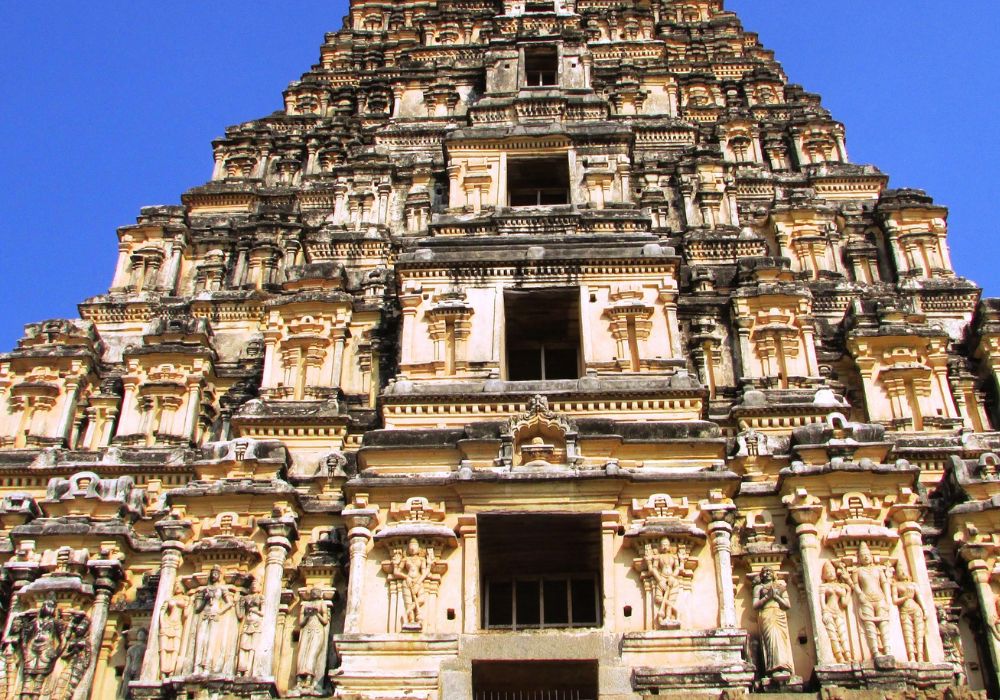

The Virupaksha Temple is renowned for its exemplary Dravidian architectural style, a hallmark of South Indian temple architecture.
The temple’s most striking feature is its towering gopuram, or entrance tower, which stands as a majestic testament to the skill and artistry of ancient craftsmen.
The gopuram is adorned with intricate carvings depicting scenes from Hindu mythology, showcasing the meticulous attention to detail that went into its construction.
As one enters the temple complex, they are greeted by a series of mandapams (hallways) and prakarams (enclosures) that lead to the main sanctum.
The temple’s main sanctum houses the deity Lord Virupaksha, with a beautifully sculpted idol that is the focal point of worship.
The temple’s architecture is characterized by its use of stone, with intricately carved pillars and walls that tell stories from Hindu mythology.
The outer walls of the temple are adorned with sculptures of gods, goddesses, and mythical creatures, each with its own symbolic significance.
Main Deity of Virupaksha Temple
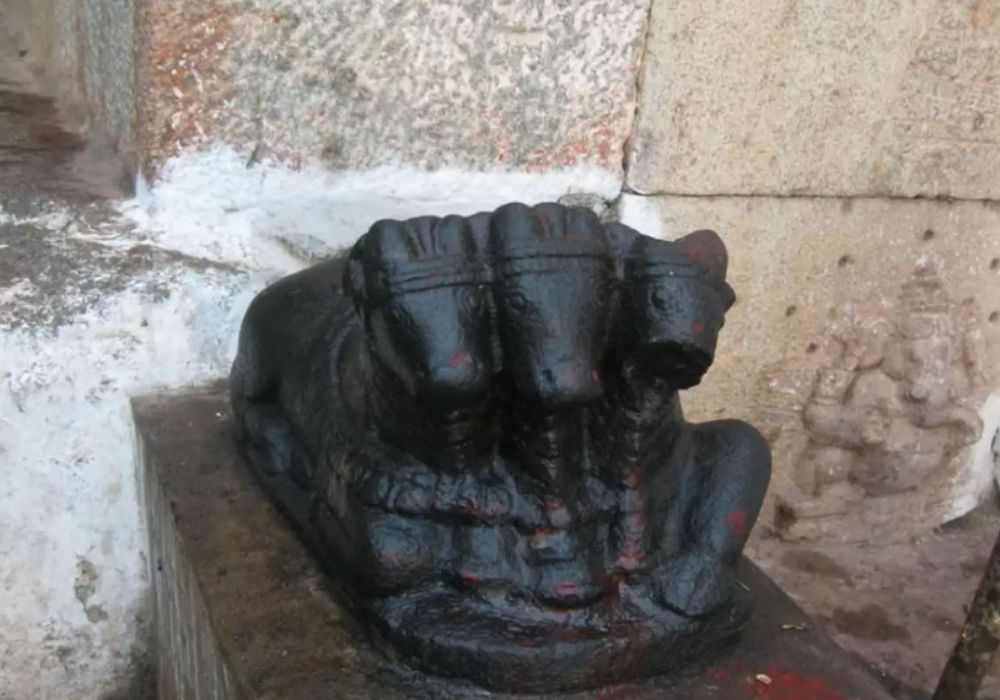

The presiding deity of the Virupaksha Temple is Lord Virupaksha, an incarnation of Lord Shiva.
Lord Virupaksha is revered as the supreme being and is worshipped by devotees seeking his blessings for prosperity, protection, and spiritual enlightenment.
Lord Virupaksha is believed to be the guardian deity of the Vijayanagara Empire, which is why the temple received royal patronage during the empire’s reign.
The deity is also associated with the local folklore and is believed to fulfill the wishes of his devotees.
The rituals associated with the worship of Lord Virupaksha are performed with great devotion and fervor.
The temple priests conduct daily rituals, including abhishekam (ritual bathing of the deity), archana (offering of flowers), and aarti (waving of lamps), to seek the deity’s blessings.
One of the most significant rituals performed at the temple is the annual chariot festival, during which the deity is taken out in a grand procession on a beautifully decorated chariot.
This festival attracts thousands of devotees who come to witness the divine spectacle and seek the blessings of Lord Virupaksha.
Temple Complex
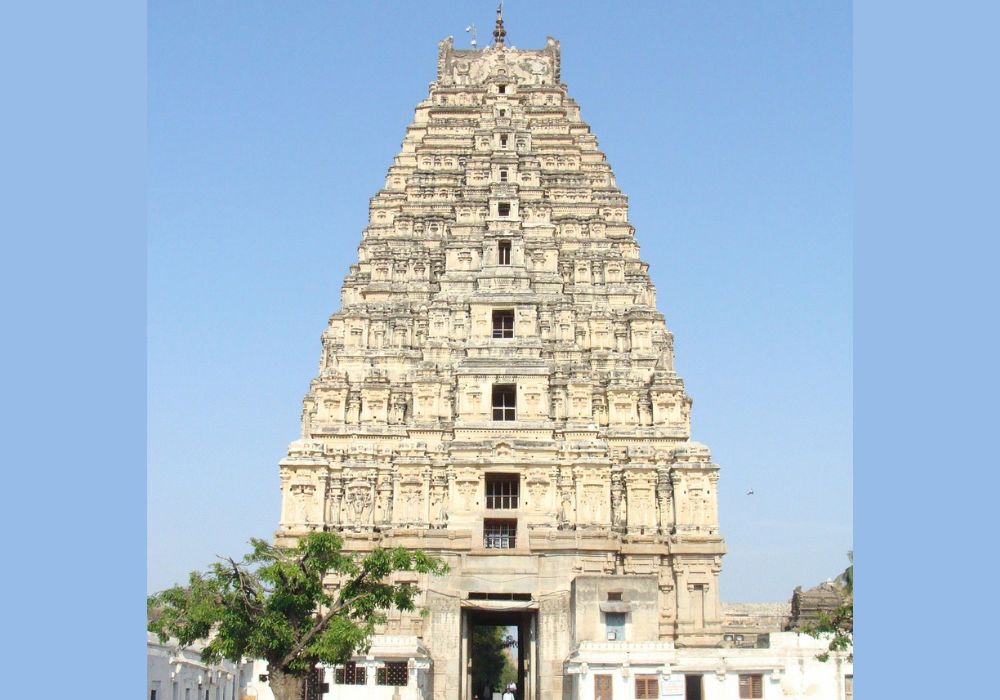

The Virupaksha Temple complex is a sprawling architectural marvel that encompasses several structures of religious and historical significance.
At its heart lies the main sanctum, dedicated to Lord Virupaksha, which serves as the focal point of worship for devotees.
Surrounding the main sanctum are several other shrines dedicated to various deities, including Lord Ganesha, Goddess Pampa, and Lord Virabhadra, among others.
Each of these shrines is adorned with intricate carvings and sculptures that depict scenes from Hindu mythology.
The temple complex also includes several mandapams (halls) and prakarams (enclosures) that serve various purposes.
The Kalyana Mandapam, for example, is used for conducting wedding ceremonies, while the Ranga Mandapam is used for cultural performances and other events.
One of the most notable structures within the temple complex is the 165-foot tall gopuram (entrance tower), which is adorned with intricate carvings and sculptures.
The gopuram is a magnificent example of Dravidian architecture and serves as a striking visual landmark for the temple complex.
Cultural Significance
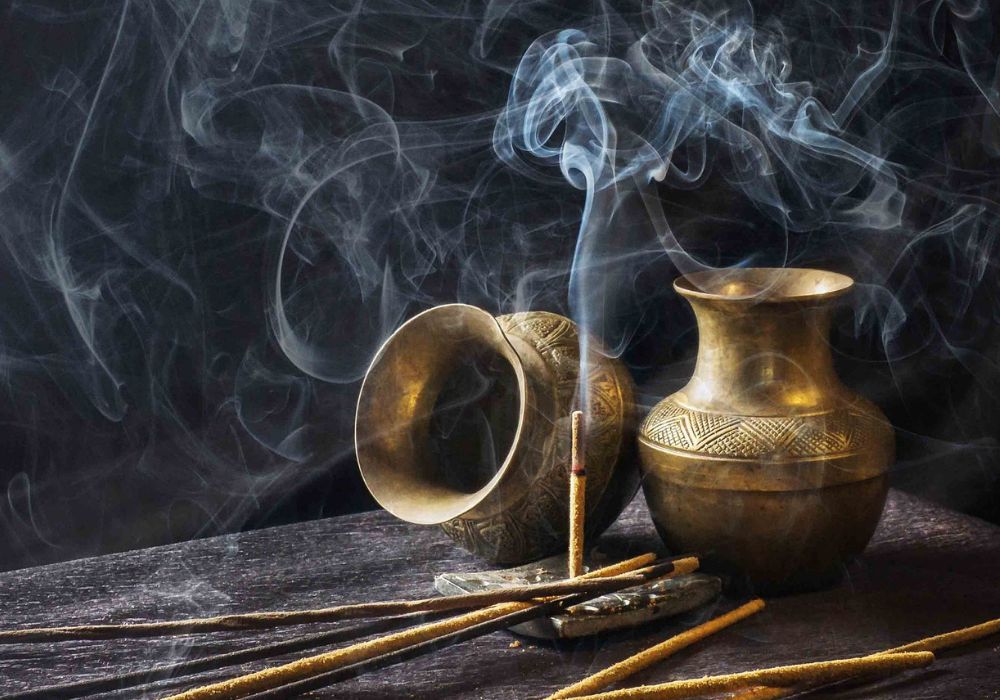

The Virupaksha Temple holds immense cultural and spiritual significance as one of the oldest and most revered temples in India.
As a cultural center, it has been a hub for religious and social gatherings for centuries, attracting devotees and tourists from around the world.
One of the most significant festivals celebrated at the temple is the Virupaksha Car Festival, also known as the Rathotsava.
During this festival, the deity Lord Virupaksha is taken out in a grand procession on a beautifully decorated chariot, accompanied by music, dance, and devotional fervor.
The festival is a vibrant celebration of faith and tradition, drawing thousands of devotees who come to witness the spectacle and seek the blessings of the deity.
Apart from the Rathotsava, the temple also celebrates other festivals such as Maha Shivaratri, Navaratri, and Diwali, each of which is marked by elaborate rituals and ceremonies.
These festivals not only hold religious significance but also serve as occasions for cultural exchange and community bonding.
The Virupaksha Temple’s cultural significance extends beyond its festivals to its role as a spiritual center.
The temple is believed to be a place of divine presence, where devotees can connect with the divine and seek solace and guidance.
The serene and sacred atmosphere of the temple makes it a popular destination for spiritual seekers and tourists alike, who come to experience its spiritual aura and marvel at its architectural beauty.
Visiting Information
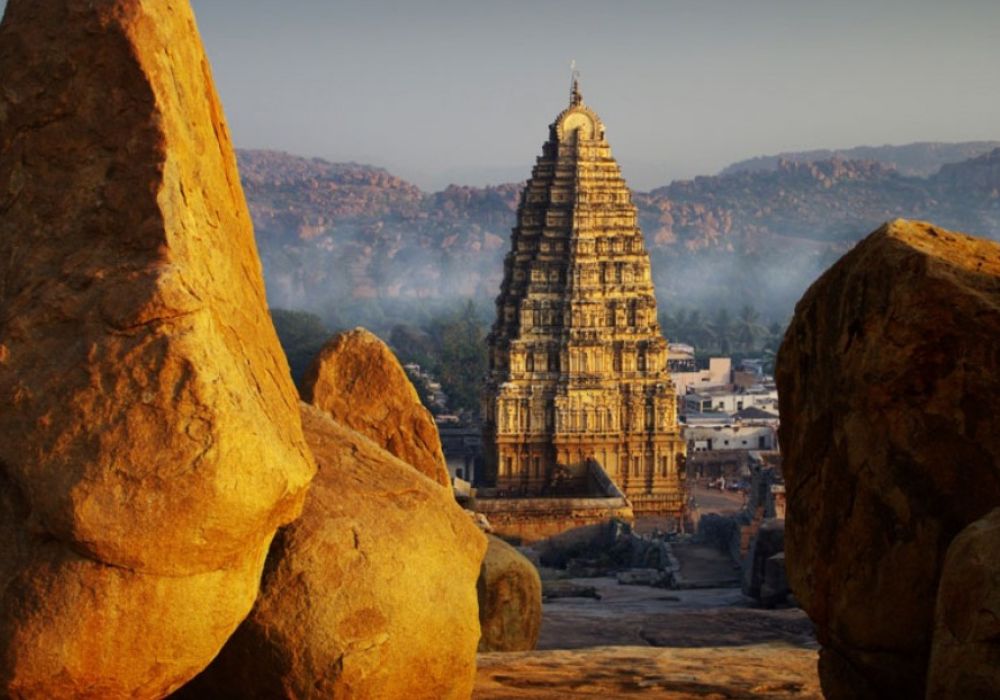

Visiting the Virupaksha Temple is a memorable experience that offers a glimpse into India’s rich cultural and spiritual heritage.
Here is some practical information to help you plan your visit:
Timings: The temple is open to visitors from early morning to late evening. It is advisable to check the exact timings before your visit, as they may vary.
Entry Fees: There is no entry fee to visit the temple. However, donations are welcome and contribute to the maintenance and upkeep of the temple.
Dress Code: Visitors are expected to dress modestly when visiting the temple. It is advisable to wear clothing that covers the shoulders and knees as a sign of respect for the sacredness of the place.
Tips for Experiencing the Temple’s Beauty and Spirituality:
- Take your time to explore the temple complex and admire its intricate architecture and carvings.
- Participate in the temple’s rituals and ceremonies to experience the spiritual atmosphere.
- Seek the blessings of the deity by offering prayers and performing rituals.
- Engage with the temple priests and learn about the history and significance of the temple.
- Capture the beauty of the temple through photography, but remember to respect the sanctity of the place.
Nearby Attractions


Hampi, the ancient city that surrounds the Virupaksha Temple, is a treasure trove of historical and cultural attractions. Here are some nearby attractions that you can explore:
- Vittala Temple: Known for its iconic stone chariot and musical pillars, the Vittala Temple is a masterpiece of Vijayanagara architecture.
- Hampi Bazaar: A bustling market street lined with shops selling traditional handicrafts, clothing, and souvenirs.
- Hemakuta Hill: A hill offering panoramic views of the Hampi ruins and the surrounding countryside, especially stunning during sunrise and sunset.
- Queen’s Bath: An ancient royal bathing complex with a unique blend of Hindu and Islamic architectural styles.
- Achyutaraya Temple: A 16th-century temple dedicated to Lord Vishnu, known for its impressive architecture and intricate carvings.
For dining options near the temple, you can explore the many local eateries and cafes in Hampi Bazaar and nearby areas.
These establishments offer a variety of cuisines ranging from traditional South Indian dishes to continental fare.
When it comes to shopping, Hampi is known for its vibrant markets where you can find a range of souvenirs, handicrafts, and local artifacts. Be sure to explore the shops around Hampi Bazaar and the Virupaksha Temple for unique finds.
Conclusion
In conclusion, the Virupaksha Temple stands as a testament to India’s rich cultural and architectural heritage.
Its ancient origins, stunning architecture, and spiritual significance make it a must-visit destination for travelers and devotees alike.
The temple’s intricate carvings, towering gopuram, and serene surroundings create a sense of awe and wonder that transports visitors to another time.
Its cultural significance as a center of worship and celebration adds to its allure, making it a vibrant hub of activity during festivals and ceremonies.
Experience the spiritual ambiance, marvel at the architectural splendor, and witness the rich tapestry of Indian culture come to life.
A visit to the Virupaksha Temple is not just a journey through history, but a soul-stirring experience that will stay with you long after you leave.
